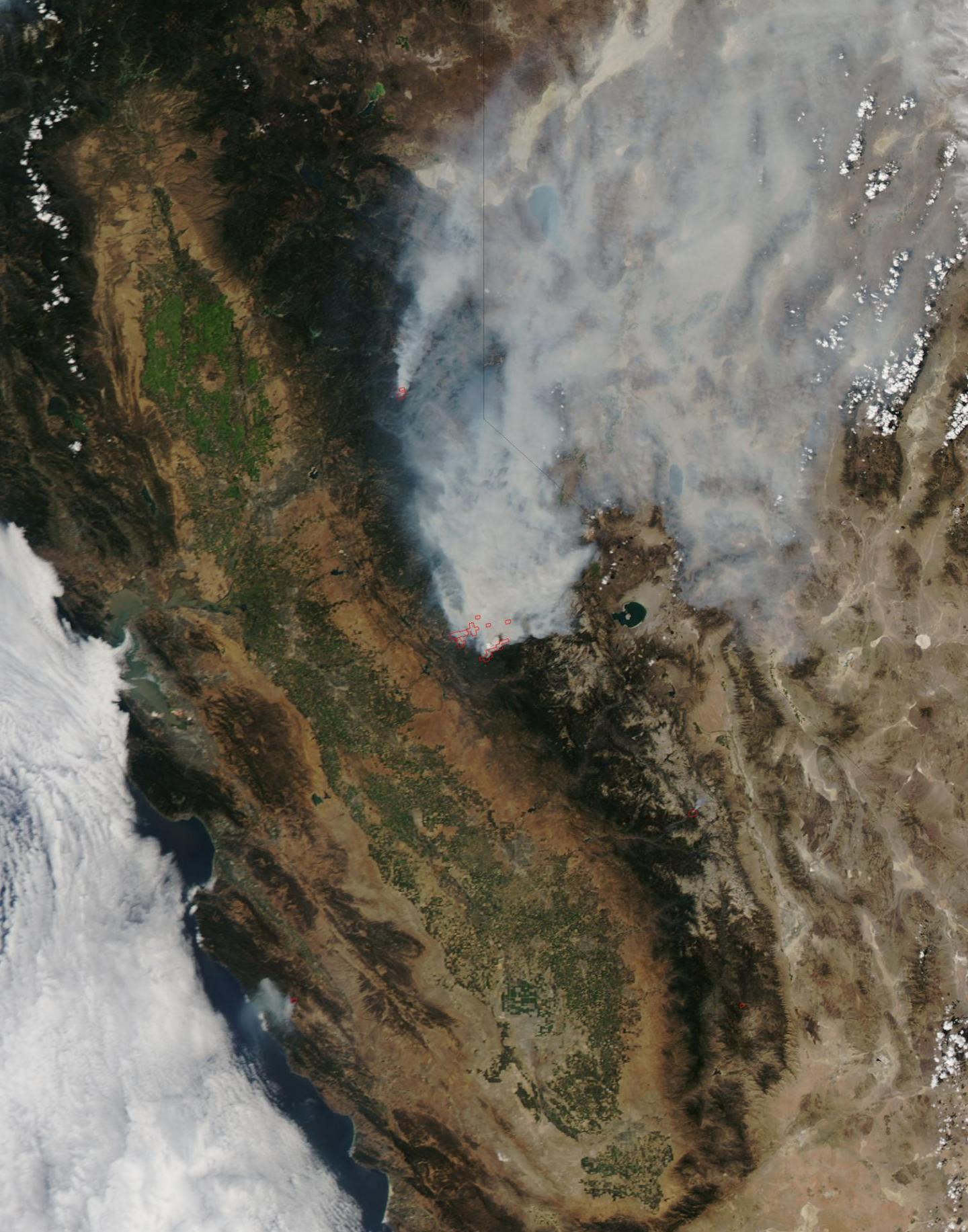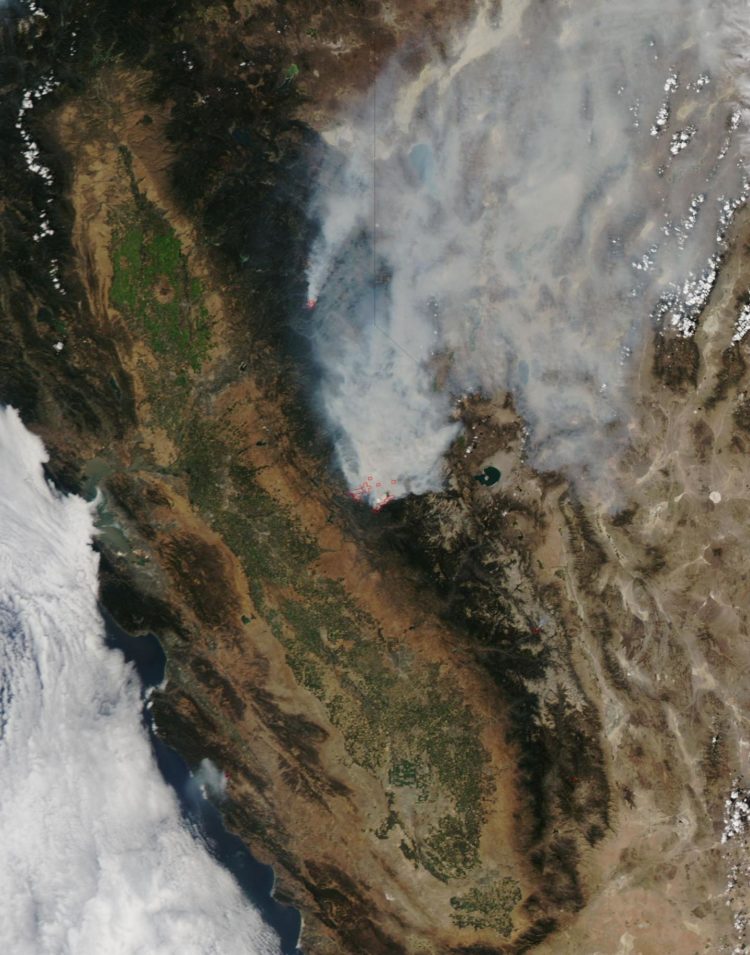Study sheds light on ‘new normal’ for firefighters

Credit: NASA
Fires started by people have steadily increased in recent decades, sparking a major shift in U.S. wildfire norms, according to a new CU Boulder-led study.
At a national scale, fires are broadly becoming larger and more frequent with fire season lengths extending over time. At the same time, wildfires started by people are more frequent, smaller, less hot and occur over longer seasons than fires started by lightning.
“The leading cause of wildfire ignitions in the United States is shifting away from lightning and towards human activity,” said Megan Cattau, a former CIRES and CU Boulder Earth Lab scientist and lead author on a study published today in Global Ecology and Biogeography. “And it’s looking like this is going to be our new normal.”
The shift toward longer fire seasons with more frequent fires presents new challenges to U.S. wildfire managers and firefighters, the authors say.
“We can’t even call it a fire season anymore–it’s nearly all year round,” added Cattau, now an assistant professor of Human Environment Systems at Boise State University.
Many studies have examined the impacts of fuel and climate on U.S. wildfire patterns, but before this study scientists had not yet comprehensively examined the relationship between ignition source and the physical characteristics of fire and their trends over time. Cattau and her colleagues pulled data from multiple sources and looked at ignition trends in roughly 3300, 50-km grid cells covering the United States, between 1984 and 2016.
Ignition type matters, in part, because of fundamental differences between anthropogenic ignitions and lightning ignitions. Wildfires kindled by lightning tend to be larger and more intense, but only occur during times during the year when weather conditions are conducive to storms. And anthropogenic fires occur more frequently and over a much longer season but are less “hot” and smaller on average.
Say people accidentally spark a wildfire in a typically low-fire season like early spring: It may not spread particularly quickly. And human-started fires can also burn closer to cities where firefighters can respond more quickly.
The team analyzed a suite of satellite data and 1.8 million government records to identify the wildfire ignition patterns across the country. Satellite records capture data from a long period of time but cannot distinguish between prescribed fires, human-ignited fires or lightning-ignited fires. So Cattau and her team also turned to the Fire Program Analysis Fire-Occurrence Database from the U.S. Forest Service, the first large-scale national database to include a comprehensive record of ignition type.
They found that in the majority of the country, human-ignited fires were more frequent than lightning-triggered ones. In fact, every single grid east of the Great Plains, and much of the coastal West was human-dominated over the last 30 years.
“The shift to more human-caused fires results in decreased fire intensity and size, but that may not necessarily be a good thing,” said Cattau. “There’s been a focus on extreme fires, but any deviation from historical fire patterns, from what that land evolved with, can cause problems. Fire is part of the ecosystem. And now its role is changing.”
People have been setting fires, deliberately and accidentally, since the pre-industrial age. But the impact of modern-day climate change on wildfire (e.g. warming trends and drier fuels) combined with more extensive land cover change and the human tendency to start fires represents a unique cocktail of conditions, Cattau said.
“As our world sees increased development, we can also expect to see increased human ignitions,” said Cattau. “This can impact people’s safety, especially those from vulnerable populations. And this shift is also bringing fires into places where there wasn’t fire before, which can damage ecosystems.”
Moving forward, the authors say there’s a clear need to develop one complete database that fuses wildfire record sources, to serve policymakers and fire managers making decisions in a changing world.
###
Media Contact
Julie Poppen
[email protected]
303-492-4007
Original Source
https:/
Related Journal Article
http://dx.





